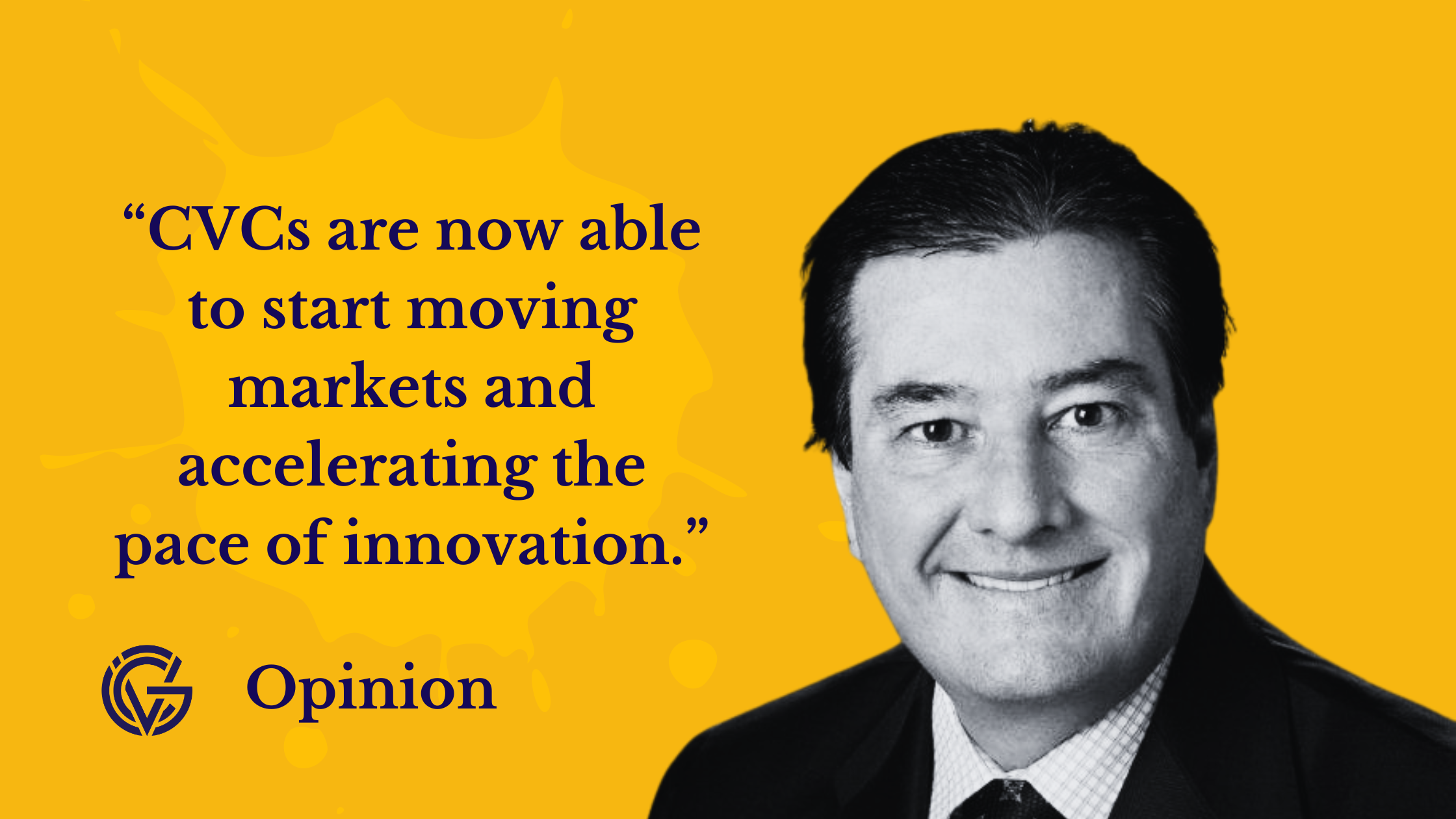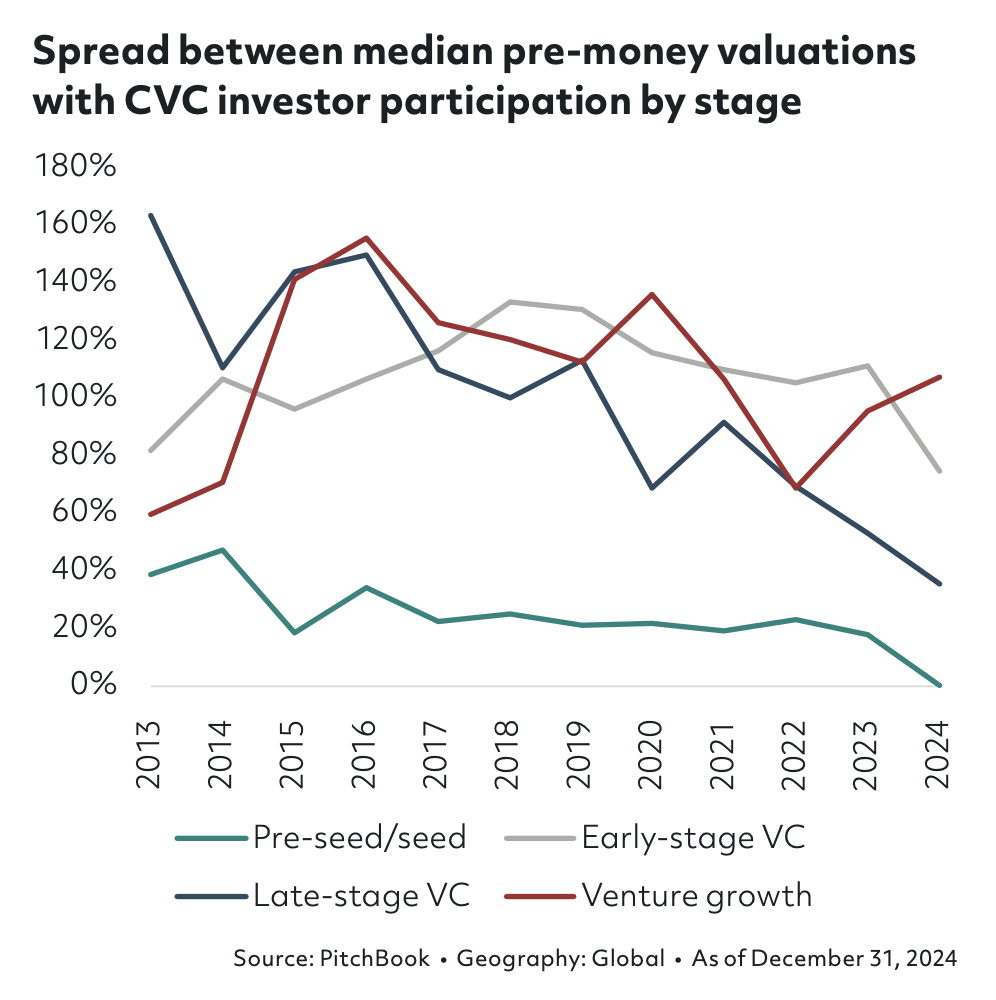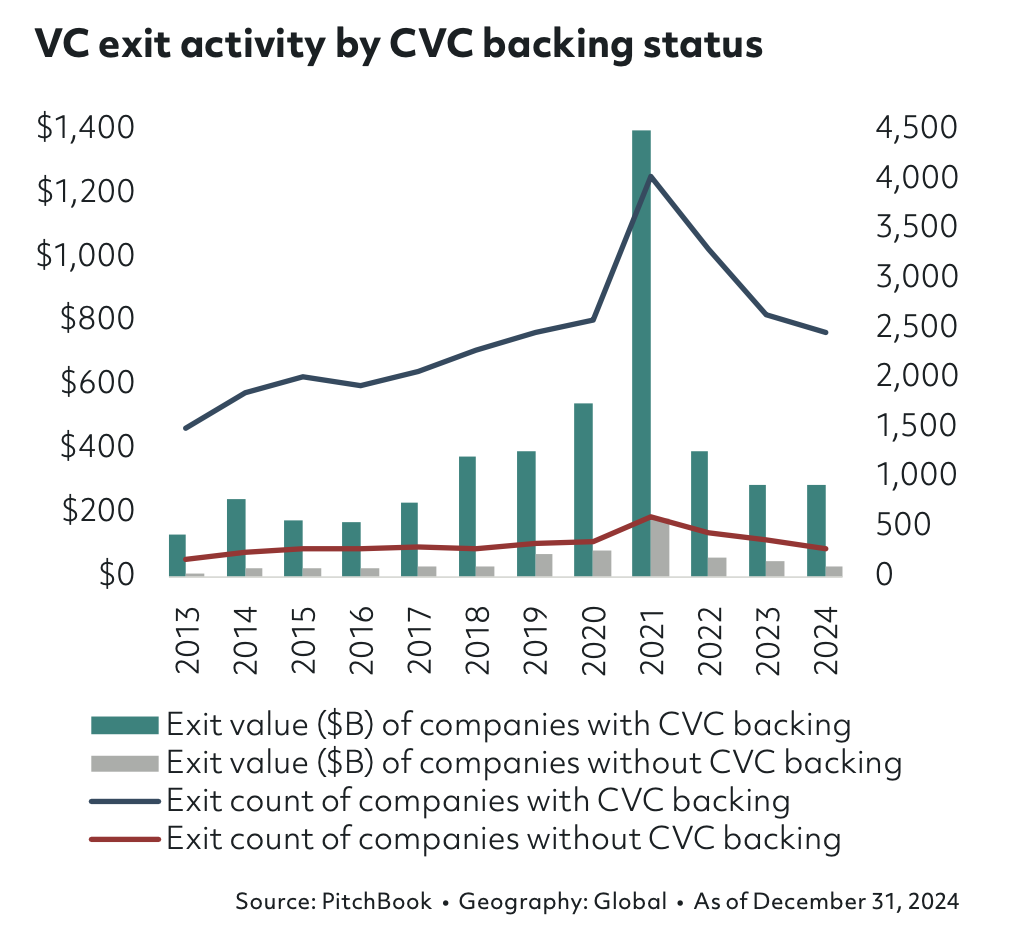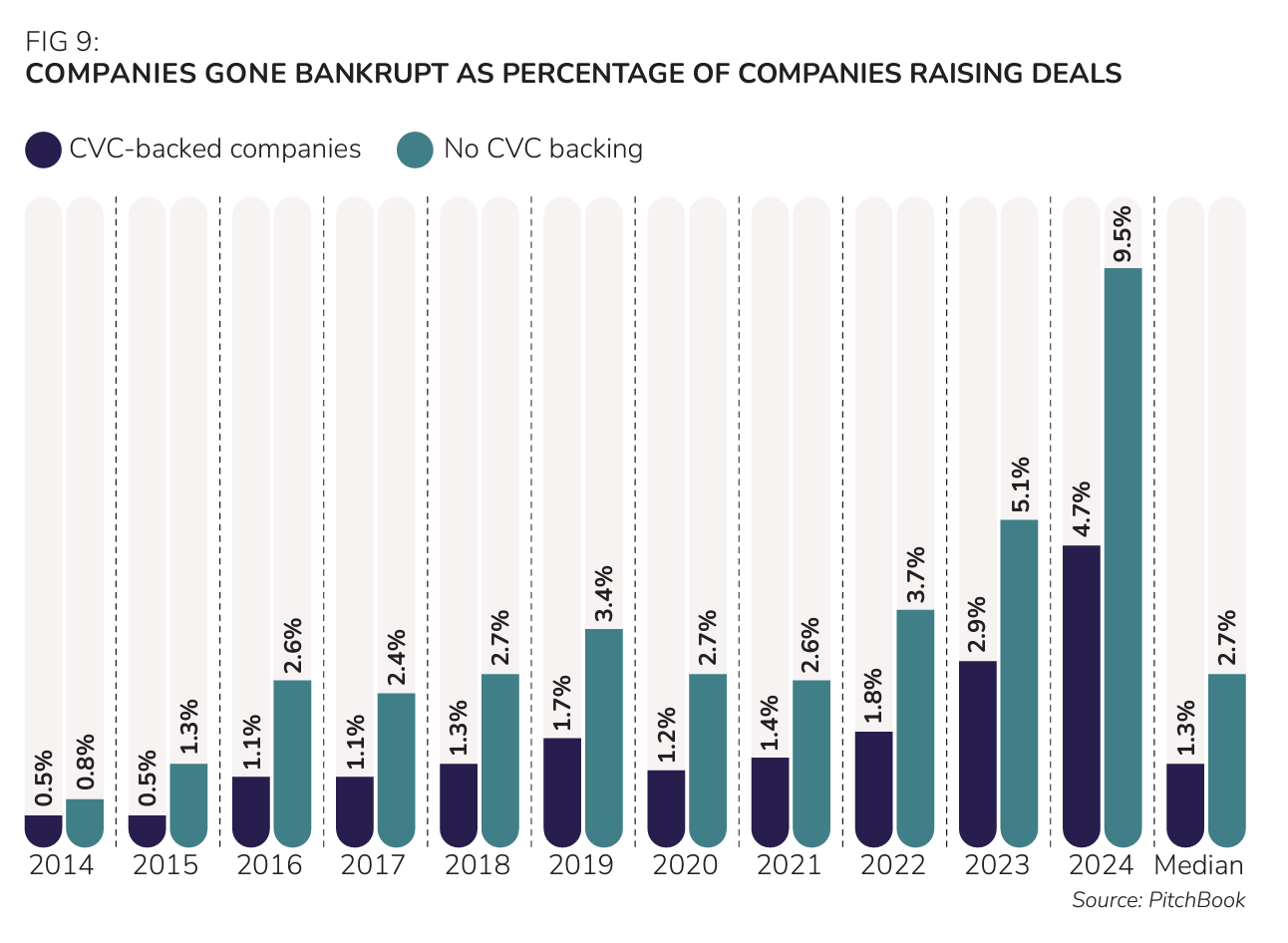Corporate investors have become pivotal players in VC markets around the globe, able to move markets. It’s now time to press our advantage.

Fifteen years ago, when I launched MSD’s Global Health Innovation Fund (GHIF), corporate venture capital was still effectively in its infancy, basically a niche within the broader venture capital ecosystem.
At the time, CVCs were often seen as strategic side projects–important ones, to be sure, but more focused on acquiring market intelligence or forming partnerships than driving significant financial returns let alone pioneering technological innovations.
Those times have changed.
Today, CVCs are pivotal players, spanning not only every part of the globe, but also every tech sector at every stage.
A new March 2025 report, co-produced by MSD GHIF and PitchBook, attests to the success and pervasiveness of corporate venture. We took the opportunity to craft this report in celebration of GHIF’s 15th anniversary.
CVCs surge in VC landscape
What matters today is the big picture, so consider the last decade of VC activity.

Between 2014 and 2024, per the GHIF-PitchBook report, the number of deals with a lead CVC investor jumped more than twofold, rising from 694 to 1500; and during that same period, the value of those deals increased threefold, from $13 billion to $39.5 billion.
Last year, of all deal value globally, CVCs were involved in more than 50%, up from a little over 40% a decade ago, per GHIF-PitchBook.
Beyond that, this report also reveals important metrics proving the superior performance of CVC-backed investments.
For example, CVC-backed deals have higher valuations. From 2016 to 2023, early-stage investments with CVC participation had pre-money valuations exceeding market-wide figures by at least 100%.

And as a testament to the profound influence of CVCs today, CVC-backed exits in 2024 reached $289.2 billion, dwarfing the $31.4 billion aggregate value of deals without CVC involvement.

Why corporate venture capital is booming
There are several factors underlying this surging trend, but I see two as most pivotal: the growing cash reserves of corporations and the distinctive benefits that CVCs offer to startups.
First, corporations today are sitting on unprecedented amounts of capital. Last year, U.S. corporate cash reserves, for instance, soared above $4 trillion for the first time ever. With so much liquidity, many corporations have realised that they can deploy their own funds more effectively by investing directly in innovation through their own venture capital initiatives. Unlike traditional venture capitalists who raise funds from external investors, CVCs typically draw from their parent company’s balance sheet, offering greater flexibility and strategic alignment.
Secondly, and perhaps most importantly, CVCs offer startups a wealth of advantages that extend beyond the capabilities of traditional venture capital firms. These benefits include early market entry, access to top talent, and integration with corporate research and technologies. For example, a pharma services startup backed by MSD doesn’t just receive funding—it gains entry to cutting-edge research facilities, regulatory expertise, and established distribution channels.
Ultimately, what truly matters is that these CVC-specific benefits translate into tangible, measurable results for both startups and their corporate parents. And beyond strategic synergies, many CVCs also generate strong financial returns. As a report from C-Suite Strategy notes, CVCs achieve IRRs on par with traditional VCs, proving that corporate-backed investments can be both strategically valuable and financially competitive.
A global trend across all sectors
Importantly, the rise of CVC isn’t confined to any one country. This is a global phenomenon.
Last year, CVCs worldwide were involved in nearly 28% of all venture deals with investments spread across regions including Asia, Europe, and Latin America, per CB Insights research. No region in 2024 had more CVC involvement than Asia where corporate investors participated in 39% of deals, according to a Silicon Valley Bank report, which found 32% of US deals included CVCs.
What’s more, CVCs are increasingly making their mark across every corner of the tech ecosystem and pioneering the bleeding edge of innovation. Industries with their own venture arms include industrial, financial services, energy, information tech, healthcare, transportation, logistics, telecom, media and beyond.
Nearly half of CVCs invested in supply chain and logistics startups last year while more than a third invested in banking and fintech and automotive and transportation startups, per SV Bank. In fact, when it comes to AI—the very frontier of tech–CVC-backed deals have outpaced VC-backed ones for every year of the last decade.
CVC-backed startups fail less, succeed more
One of the most compelling reasons for the rising importance of CVC is the increased success rate of startups that receive corporate backing. Research consistently shows that startups with CVC support have higher graduation rates and lower failure rates compared to those backed solely by traditional VCs.
For example, in 2024, startups without CVC funding were more than twice as likely to go bankrupt (i.e. 9.5% vs 4.7%), per GCV’s: The World Of Corporate Venturing report. And these startups are twice as likely to advance to the next round of funding.

Arguably the most significant fact is that CVC-backed companies exit at higher valuations than VC-backed ones, as highlighted in GHIF-PitchBook 2025 report.
Critically, CVC-backed startup success is about much more than capital. It’s about strategic, synergistic alignment. The access that startups receive create a supportive ecosystem that traditional venture capital cannot replicate no matter how much money they invest.
The future of corporate venture: a call for action
We’ve come a long way during the decades that I’ve been in corporate venture capital, and I’m highly optimistic about the next few decades for our industry.
As I look ahead, I believe that the expansion of CVC will continue to offer both startups and corporations unprecedented opportunities for collaboration and growth.
But we are just at the starting point of CVC’s power. CVCs are now able to start moving markets and accelerating the pace of innovation given our platforms. It’s critical for corporations to recognize the unique value their venture arms have the capacity to create.
Now is the time to press our advantage.
I encourage our industry to keep building strategic partnerships, make bold investments in emerging sectors, foster a strong culture of entrepreneurship, strengthen connections with other CVCs, and prioritize long-term value over short-term gains.
By harnessing our competitive advantages—ample capital, strong strategic networks, in-house research, top talent, and established infrastructure—CVC’s potential is limitless. However, unlocking this potential requires intentional effort and unwavering commitment.
Bill Taranto is president of MSD Global Health Innovation Fund and vice president of MSD Global Health Innovation Group. MSD GHIF has $600M under management and provides growth capital to companies that improve healthcare delivery and services.








